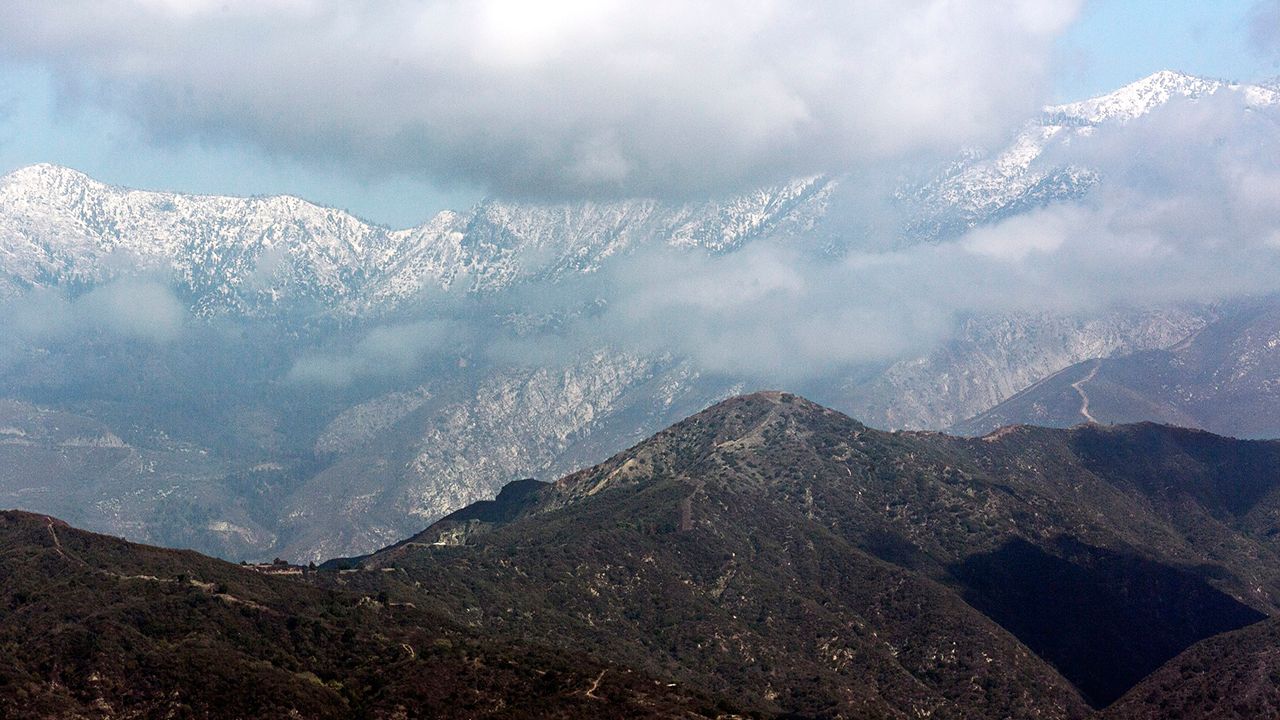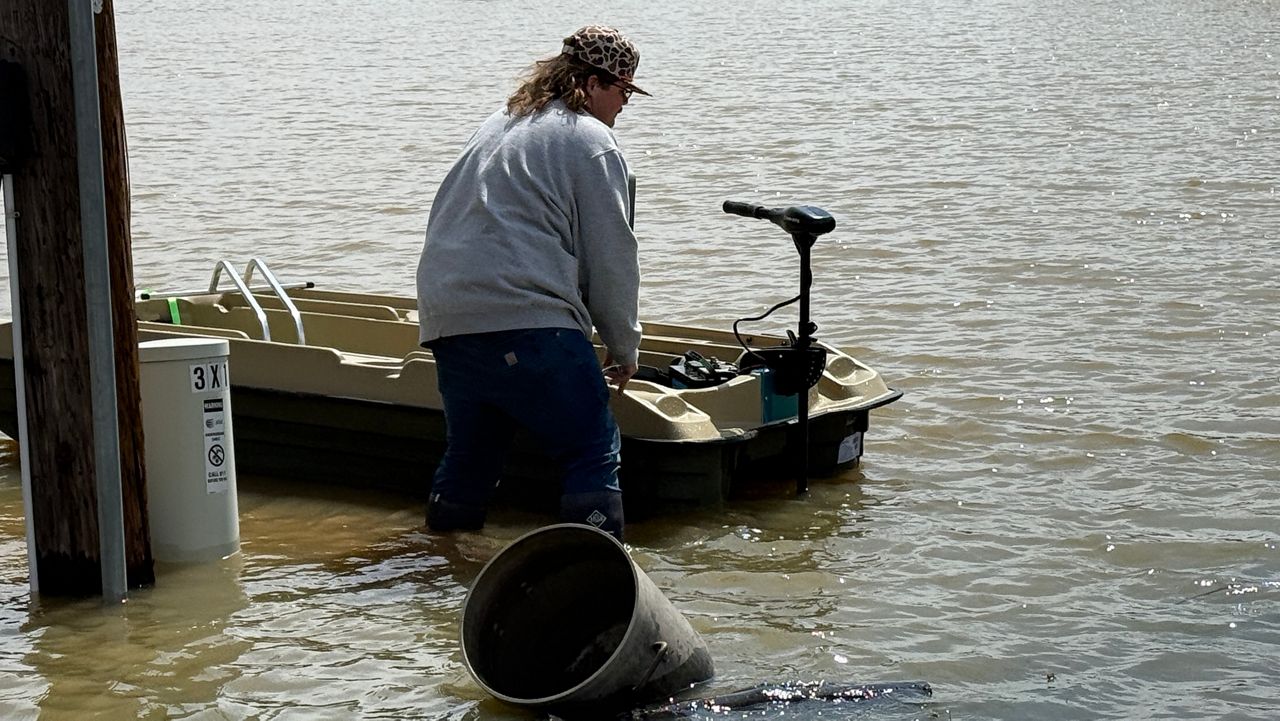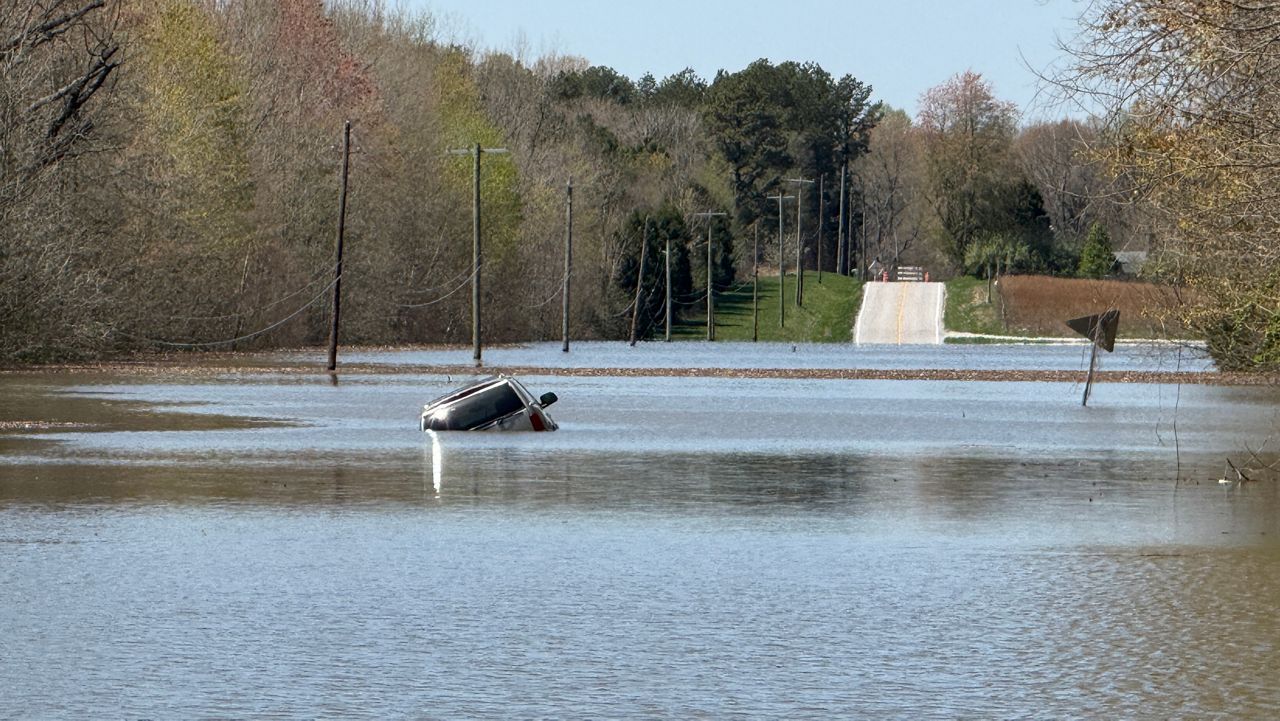HIGHLAND HEIGHTS, Ky. — On Friday, the recipient of an X-ray and CT scan from Northern Kentucky University (NKU) radiology students was a mythical creature from under the sea.
At least, that’s what it was described as being when it was donated to a historical society more than 100 years ago.
This “little mermaid,” however, was not as cute as the one in the classic Disney movie.
The Clark County Historical Society in Springfield, Ohio, is in possession of the creature in question.
“It kind of gives you that question mark look of, ‘What is it? What are you? What was the reason for trying to put something like this together?’” said Joseph Cress, assistant professor for NKU’s radiologic science program.
Natalie Fritz, archivist and outreach director for the Clark County Historical Society, echoed a question people often ask about it.
“Is he a monkey fish? Half monkey, half fish?” she said.
NKU radiology student Haley Griffin was brutally honest.
“It’s kind of ugly. It kind of looks mummified a little bit,” she said. “I just find it really interesting. I mean, I’ve never seen anything like this before. It looks like a mermaid, but is it real or is it not? What aspects to it are there that are real?”
Those questions are why the historical society brought the “merman” to NKU.
“It’ll be nice to have some more answers about what he is,” Fritz said.
Cress said it was something students and faculty were looking forward to.
“We thought it was a really unique opportunity for our students to kind of get hands-on experience taking X-rays and a CT scan of something that they really don’t know anything about. They get a lot of education when it comes to human anatomy, so they can kind of anticipate what’s coming,” he said. “This is something unique that they’re not going to be able to do, probably ever again.”
The little guy was donated to the historical society in 1906, and the staff think he dates back even further to the 1870s.
Sadly, for people who want to believe in real mer-people, the trend of creating these ‘Fiji Mermaids” and selling them as attractions was common at the time.
They were often part of carnivals, museums and traveling side shows in the 19th century. P.T. Barnum even had one in his collection.
“I don’t think it was a thing that existed in nature. I think it was crafted. I know I’m personally more interested in seeing how it was made,” Fritz said. “Is it totally made up? Is it completely paper mache? Is there any actual animal that was a part of it? Or was someone taking a fish and taking a monkey and merging them together?”
The X-rays and scans gave a more clear picture.
“It is Frankensteined and pieced together. So externally it looks like the head and kind of the thorax of a monkey. More toward the feet end is a tail. So you think initially it’s going to be kind of a monkey and a fish put together. After we’ve seen it, it still looks like it’s going to be the head and the thorax of a monkey, but down toward the hands it looks to be more amphibious like. So it could be an alligator, lizard of some sort. We’re not quite sure. And then it is the fish down toward the end,” Cress said. “There was for sure some taxidermy.”
The scans also revealed some metal and cotton.
“They found that it could be possibly wood in there. But then they found there’s actually some kind of bone in the jaw,” Griffin said.
They also confirmed it was indeed male. And while it may not be a true merman, it certainly prepared students for whatever creature comes in next.
“Yeah, I’m up for anything,” Griffin said.
The scans and X-rays will be sent to the Cincinnati Zoo and Newport Aquarium to confirm the animal parts used in the creature’s creation.










